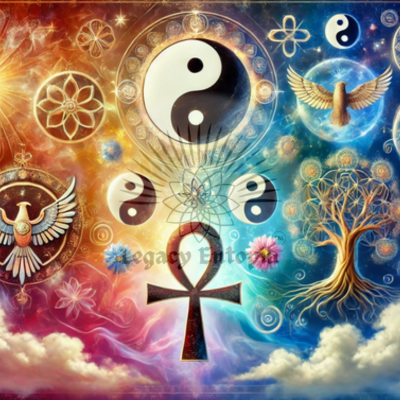What is Spiritual Symbolism?
Exploring Spiritual Symbolism and Its Significance
This post What is Spiritual Symbolism delves into the fascinating world of symbolic representations, exploring its significance, common symbols, and how to interpret them in the context of your spiritual journey. By understanding these symbols, you can enhance your connection to the divine and gain profound insights into your life’s purpose.
Discover the transformative power of spiritual symbolism! Explore how these profound symbols can enhance your understanding of the universe and guide you on your spiritual journey. Dive into the world of spiritual symbolism today and unlock deeper insights into your life!

Charging Sigils for Manifestation
Understanding Spiritual Symbolism (you are here)
Sigils and Spiritual Symbolism
Spiritual symbolism is a profound and intricate aspect of various cultures and belief systems, serving as a means to convey deeper meanings, ideas, and truths about existence, the universe, and the divine. Here’s a detailed overview of spiritual symbolism:
What is Spiritual Symbolism?
Spiritual symbolism refers to the use of symbols—objects, figures, colors, or gestures—to represent ideas, beliefs, or concepts within spiritual or religious contexts. These symbols often carry rich layers of meaning and are used to convey abstract spiritual truths, moral lessons, and mystical experiences.
Importance of Spiritual Symbols
- Communication of Complex Ideas: Symbols provide a way to express complex spiritual concepts that may be difficult to articulate in words. For instance, the lotus flower symbolizes purity and spiritual awakening in many Eastern traditions.
- Cultural and Historical Context: Spiritual symbols often reflect the cultural and historical backgrounds of the societies that created them. They can provide insight into the values, beliefs, and experiences of those cultures.
- Connection to the Divine: Many spiritual symbols serve as conduits for connecting with the divine. For example, the cross in Christianity represents the sacrifice of Jesus and is a powerful symbol of faith and salvation.
- Ritual and Practice: Symbols are frequently incorporated into rituals and spiritual practices. For instance, the use of candles, incense, and specific gestures (mudras) in meditation can invoke specific energies or intentions.
Common Spiritual Symbols and Their Meanings
- The Ankh: An ancient Egyptian symbol representing life and immortality, often associated with the eternal cycle of life, death, and rebirth.
- The Yin-Yang: A Chinese symbol that embodies the concept of duality, illustrating how opposing forces are interconnected and interdependent in the natural world.
- The Om Symbol: A sacred sound and spiritual icon in Hinduism and Buddhism, representing the essence of the ultimate reality or consciousness.
- The Eye of Horus: An ancient Egyptian symbol of protection, royal power, and good health, often used to ward off evil.
- The Tree of Life: A symbol found in various cultures, representing growth, interconnectedness, and the cycle of life. In Kabbalah, it illustrates the spiritual path to divine wisdom.
How to Interpret Spiritual Symbols
Interpreting spiritual symbols requires introspection, cultural understanding, and openness to personal experiences. Here are some steps to consider:
- Contextual Understanding: Consider the cultural and historical context of the symbol. Researching its origins can provide valuable insights.
- Personal Resonance: Reflect on how the symbol resonates with you personally. What emotions or thoughts does it evoke? Your interpretation may differ from traditional meanings.
- Symbolic Associations: Explore the associations linked to the symbol, including colors, shapes, and related symbols. This can enrich your understanding of its significance.
- Intuitive Insights: Trust your intuition. Spiritual symbols often communicate on a subconscious level, so pay attention to your gut feelings and instincts regarding their meanings.
Spiritual symbolism plays a vital role in expressing the mysteries of existence and connecting individuals with the divine. By understanding and exploring these symbols, one can deepen their spiritual journey and gain insights into the inter-connectedness of all life. Whether through personal reflection or study, engaging with spiritual symbols can foster greater awareness and enlightenment.

I’m really enjoying the web site.